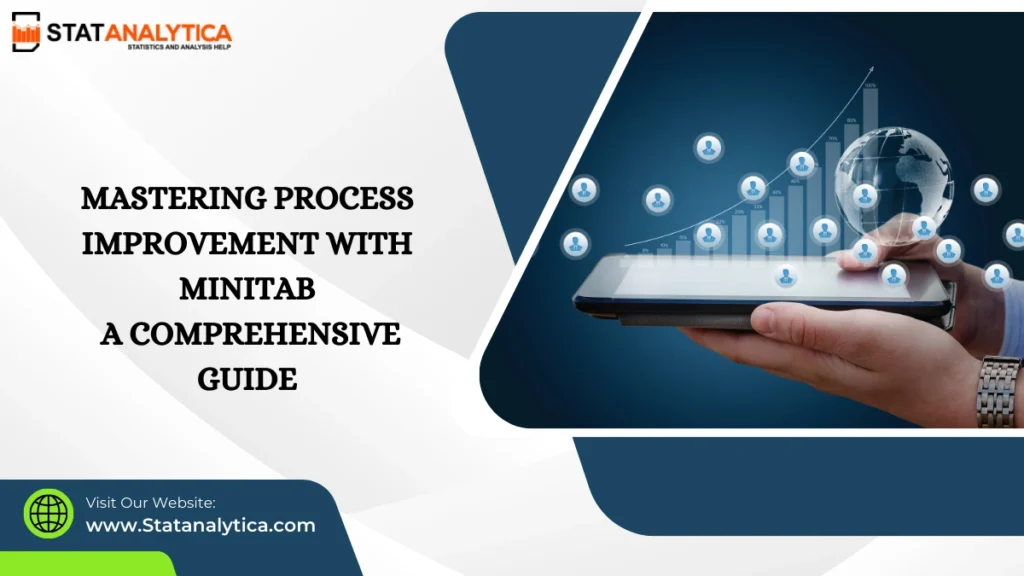Every organization wanting to thrive in the now competitive ambiance has to keep optimizing its internal practices continuously. Minitab is world-renowned statistical software with a toolbox of features to promote data-informed decision making and process optimization. In this ultimate guide, we explore mastering process improvement with Minitab strategies to maximize efficiency and overall quality operations.
Mastering Process Improvement with Minitab
Table of Contents
Understanding Minitab and Its Role in Process Improvement
Minitab: It’s statistical software that is meant to help professionals in data analysis and process improvement. Minitab is another widely used Statistical package in different industries providing tools for Statistical and Process Control, Quality and Process improvement – a must-have tool for all organizations who show commitment to operational excellence.
Key Features of Minitab for Process Improvement
Minitab provides abundant functions for supporting process improvement:
- Statistical Analysis: Carry out advanced statistical analyses, such as regression analysis, ANOVA and hypothesis testing , with ease.
- Control Charts: Track changes in process stability and variability over time to help identify any unusual patterns.
- Process Capability Analysis: Evaluate how your process complies with defined limits and discover areas for improvement.
- Design of Experiments (DOE): Plan, execute and analyze scientifically controlled experiments to give you insight into the process variables affecting your process.
- Quality Tools: Apply tools such as Pareto charts, cause-and-effect diagrams, etc. to recognize and rank trouble spots.
Implementing Minitab for Effective Process Improvement
To harness the full potential of Minitab in your process improvement initiatives, consider the following steps:
1. Data Collection and Input
Accurate data is the foundation of any improvement effort. Ensure you collect relevant data points and input them correctly into Minitab. The software supports various data formats, allowing for seamless integration and analysis.
2. Data Visualization
Visual representations can reveal patterns not immediately apparent in raw data. Minitab offers a range of plotting options:
- Histograms: Understand the distribution of your data.
- Boxplots: Identify data spread and detect outliers.
- Scatterplots: Explore relationships between variables.
3. Statistical Analysis
Delve deeper into your data using Minitab’s statistical tools:
- Regression Analysis: Determine the relationships between variables and predict outcomes.
- ANOVA (Analysis of Variance): Compare means across multiple groups to identify significant differences.
- Hypothesis Testing: Test assumptions and make informed decisions based on statistical evidence.
4. Control Charts for Process Monitoring
Control charts are an effective way to monitor the behavior of a process through time. They assist in identifying common cause variations (inherent to the process) versus special cause variations (non-random or external influence). Continuous updating of control charts helps maintain the stability of a process and ensures that any changes in the process are immediately taken care of.
5. Process Capability Analysis
To assess process capability for a process, you will need to identify how well your process outputs are producing within specific limits. Minitab capability analysis metrics like Cp, Cpk, Pp, and Ppk tell us how good a process is and where we should focus on improvements.
6. Design of Experiments (DOE)
Design of Experiments(DoE) is a systematic approach to understanding the relationship between factors that affect a process and the output of a process. Minitab makes it easy to create and analyze experimental designs to find important factors and optimize processes.
7. Utilizing Quality Tools
Minitab includes several quality tools to aid in process improvement:
- Pareto Charts: Identify the most significant factors contributing to a problem, allowing you to prioritize improvement efforts.
- Cause-and-effect diagrams: Also known as fishbone diagrams, these help in brainstorming potential causes of a problem and organizing them systematically.
- Run Charts: Analyze data points over time to detect trends, shifts, or cycles in a process.
Practical Example: Reducing Manufacturing Defects with Minitab
Consider a manufacturing company aiming to reduce defects in its production line. Here’s how Minitab can be employed:
- Data Collection: Gather data on defect types and frequencies over a specified period.
- Pareto Analysis: Use a Pareto chart to identify the most common defects, focusing on the ones that constitute the majority of issues.
- Cause-and-effect Analysis: Develop a cause-and-effect diagram to brainstorm potential causes for the top defects.
- Hypothesis Testing: Conduct tests to validate the significance of suspected causes.
- Process Improvement: Implement changes based on the analysis, such as equipment maintenance or staff training.
- Control Charts: Monitor the process post-implementation to ensure the improvements are sustained and identify any new variations promptly.
Click For: Minitab Assignment Help
Best Practices for Using Minitab in Process Improvement
To maximize the benefits of Minitab in your process improvement projects:
- Continuous Learning: Stay updated with Minitab’s latest features and enhancements to leverage new tools and functionalities.
- Regular Training: Invest in training sessions for your team to ensure proficient use of the software.
- Data Integrity: Ensure the data collected is accurate, consistent, and relevant to maintain the reliability of your analyses.
- Collaborative Approach: Engage cross-functional teams in the analysis process to gain diverse insights and foster a culture of continuous improvement.
Conclusion
For every organization that relies on continuous process improvement, Minitab is the solution with everything you need. The platform’s intuitive interface and robust analytical capabilities enable professionals to make informed decisions, improve process efficiency, and drive operational excellence. Having Minitab as a part of your process improvement initiatives empowers your organization to achieve continued success and stay ahead of the competition.
What industries use Minitab for process improvement?
Minitab is widely used in manufacturing, healthcare, education, finance, and service industries for quality improvement and data analysis.
Is Minitab suitable for beginners?
Yes, Minitab provides an intuitive interface and offers extensive tutorials, making it accessible for both beginners and advanced users.
How does Minitab compare to other statistical software?
Minitab is known for its user-friendly design and robust statistical tools, making it a preferred choice for process improvement compared to alternatives like R or SAS, which require more coding expertise.


